This post may contain affiliate links. Please read our disclosure policy.
Taiwanese thick soy sauce, also called soy paste or jiang you gao (醬油膏), is sweet, savory, glossy, and used in everything from rice bowls to Taiwanese Dan Dan Noodles. Think of it as the Taiwanese version of oyster sauce—used just as often (or more) in everyday cooking.
My version is easy to make at home, simple to make gluten-free, and perfect for drizzling, dipping, or braising. Let me show you how.

How Taiwanese Thick Soy Sauce Is Different
Taiwanese thick soy sauce is often confused with dark soy sauce, oyster sauce, or kecap manis—but each has a different purpose and flavor profile.
- Dark soy sauce is thinner and less saltier—mainly for adding color in stir-fries
- Oyster sauce is rich and savory from oyster extract.
- Kecap manis is syrupy and heavily sweetened.
Traditional versions of Taiwanese soy paste use fermented black beans for depth. My homemade version builds similar umami using soy sauce, coconut sugar, vinegar, and warm spices—no fermentation required.
Key Ingredient Notes
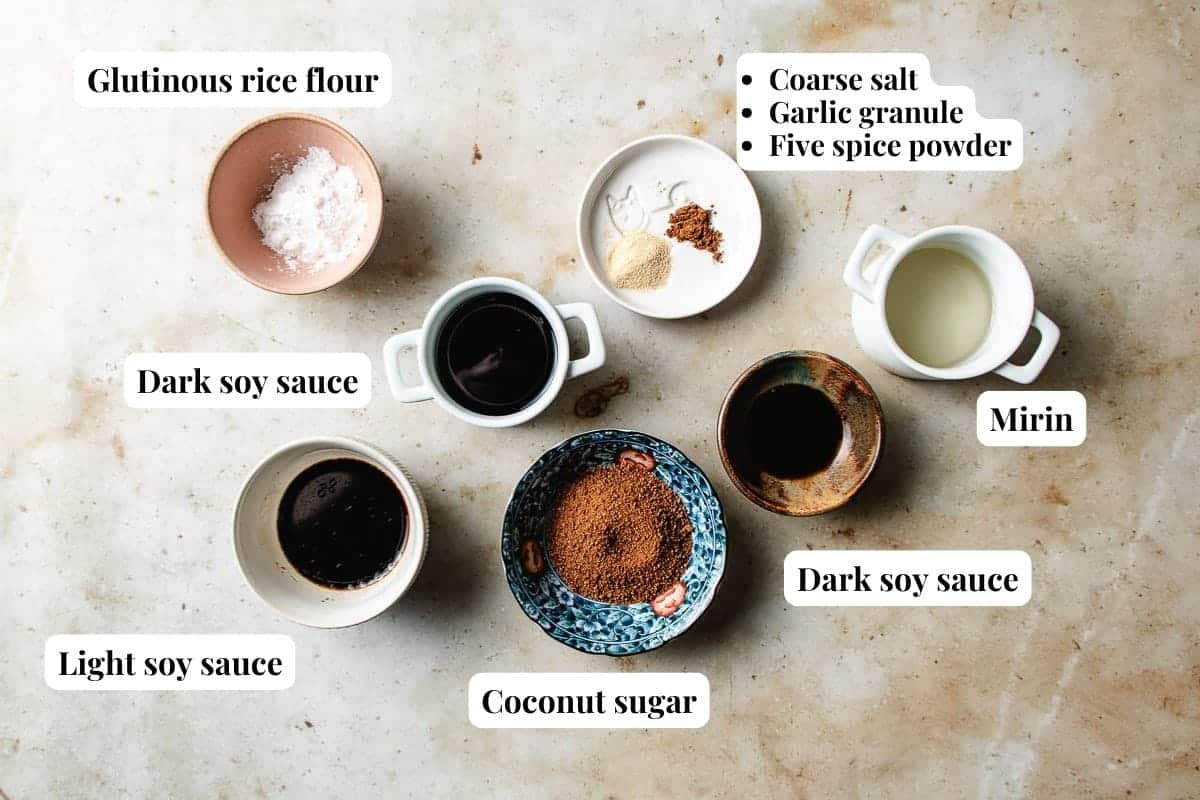
- Light and dark soy sauce: Light soy sauce adds that classic savory-salty flavor, while dark soy brings a deeper, caramelized sweetness. Using both gives the sauce color and balance.
- Mirin and coconut brown sugar: These help mellow out the saltiness from the soy sauce and give the paste a well-rounded, lightly sweet flavor. I like coconut brown sugar for its richer taste, but regular brown sugar works too.
- Chinese black vinegar, garlic granule, and five spice powder: This trio adds depth and complexity without needing extra steps. Traditional versions often use fermented black beans, but that can be tricky to replicate at home. These ingredients help mimic that same fermented umami flavor—adding savory warmth, tang, and a subtle herbal note like you’d find in many Taiwanese condiments.
- Glutinous rice flour: This is the same flour used to make mochi. It gives the sauce body and that thick, glossy, clingy texture. Compared to starch, it’s much more stable—less likely to separate or break down after cooling.

How to make the sauce

- Add everything to a pot: Combine light soy sauce, dark soy sauce, water, mirin, coconut sugar, vinegar, garlic granule, and five spice powder in a medium pot. This forms your flavor base.
- Mix the slurry: In a small bowl, stir glutinous rice flour with 2 tablespoons of cold water until smooth. It should look like thin milk with no lumps.
- TIP: Use cold water—warm water can make it clump.
- Simmer the sauce: Bring the mixture to a low simmer over medium-low heat. Stir to help dissolve the sugar and blend the flavors. Don’t let it boil.
- Whisk in the slurry: Slowly pour in the slurry while stirring. Keep the heat steady so it thickens smoothly.
- Stir until it thickens: Cook for 2 to 4 minutes, stirring constantly, until the sauce is just a little thinner than maple syrup. It should coat a spoon but still drip off.
- Let it cool: Turn off the heat and let the sauce cool. It will thicken a bit more as it sits.
Why I Use Glutinous Rice Flour (and Not Other Starches)
Glutinous rice flour gives the sauce that signature clingy texture you expect from Taiwanese soy paste. It’s smooth, slightly sticky, and thick—but not gloopy or stretchy like cornstarch or tapioca can get.
It also holds up better in the fridge. When the sauce cools, it stays thick and glossy. No separation, no watery mess. Cornstarch and tapioca? They tend to fall apart or get gummy after chilling.
Flavor-wise, it’s mild and blends right in. Other starches can leave an odd aftertaste or make the sauce look too shiny or too thick.
Ways to use the sauce
This sauce is super versatile. You can use it in cooking, or as a finishing drizzle to boost flavor right before serving. An easy way to think about it: wherever you’d use oyster sauce, you can often use Taiwanese sweet soy sauce instead. In fact, that’s exactly how it’s used in a lot of Taiwanese home cooking.
- Use it in braises and stir-fries: It works great in saucy, simmered dishes where you want a little sweetness and that glossy, clingy texture. Try it in Dan Dan Mian, Lu Rou Fan, or Taiwanese Braised Minced Pork. You can also mix it into Taiwanese Braised Tofu.
- Use it as a dipping or seasoning sauce: Drizzle it over Dan Bing, serve it with Shrimp Wontons, or pair it with Keto Scallion Pancakes for that perfect sweet-savory balance.
- As a marinade: Pour it over chicken thighs or wings to make Taiwanese soy sauce chicken.
FAQs
Yes—it’s very easy to make it gluten-free. Nowadays you can find both gluten-free light soy sauce and gluten-free dark soy sauce. There’s also gluten-free mirin available. The rest of the ingredients—like coconut sugar, vinegar, and glutinous rice flour—are naturally gluten-free.
If you’d rather buy it, there are a couple solid options:
– Kinlan: This is a classic Taiwanese brand, available on Amazon. The texture is thicker and more gelatinous, but it’s authentic and commonly used in Taiwan.
– Yunhai: This is a U.S.-based Taiwanese pantry shop. Their sticky soy paste is gluten-free, and actually the flavor base for this recipe. It’s well-balanced and has a smoother, more liquidy consistency—thicker than regular soy sauce but not as sticky as Kinlan’s version. No starch thickeners, just a clean, umami-rich flavor.
Try these Taiwanese sauces next!
- Shacha sauce: Also known as Taiwanese BBQ sauce—great for marinades, stir-fries, and hot pot sauces.
- Ginger scallion sauce: A must-have for noodles, crispy chicken, rice bowls—you name it.
- Wonton sauce: Simple, savory, and a little vinegary. Perfect for dumplings or wontons.
Taiwanese thick soy sauce recipe

Ingredients
- 3 tbsp light soy sauce
- 3 tbsp dark soy sauce
- ¼ cup water 4 tbsp
- 2 tbsp mirin
- 3 tbsp coconut brown sugar
- 2 tsp Chinese black vinegar
- ⅛ tsp garlic granule
- ⅛ tsp coarse sea salt
- A small pinch Five spice powder
- 1 tbsp glutinous rice flour or mochiko sweet white rice flour
Instructions
- In a medium sauce pot, add the ingredients from light soy sauce to five spice powder.
- In a separate bowl, make a slurry: mix the rice flour with 2 tablespoons of cold water until smooth.
- Bring the soy sauce mixture to a low simmer over medium-low heat, stirring with a wooden spoon to dissolve the sugar, about 5-6 minutes. Whisk in the slurry.
- Continue cooking over medium-low heat, stirring constantly, until the sauce thickens to a slightly thinner-than-maple-syrup consistency (about 2 minutes).
- Turn off the heat and let the sauce cool. It will thicken slightly more as it cools and the texture will coat the back of the spoon.
Notes
- Storage info: Store the sauce in an airtight container in the fridge. It will stay fresh for up to 5 days. The flavor and texture hold up well, thanks to the sugar, soy, and vinegar. If you notice any sour smell or mold, it’s time to toss it. Give it a stir before using, as it may thicken more or separate slightly after chilling.
- Can you freeze the sauce? Yes — you can freeze the sauce for longer storage. After cooling completely, spoon it into a freezer-safe container or portion it into ice cube trays or small silicone molds. Once frozen, transfer the cubes to a labeled freezer bag. It’ll last up to 6 months in the freezer without significant quality loss. To use, thaw a cube in the fridge or heat it gently in a pan — it will melt back into a smooth, glossy sauce.
- Can I use another starch instead of glutinous rice flour?
- You can use tapioca or cornstarch, but the texture will be different. Glutinous rice flour gives the sauce a smooth, glossy, slightly sticky finish—just like traditional Taiwanese soy paste. It also holds up better after chilling, staying thick and shiny without separating.
- Tapioca or cornstarch can work in a pinch, but they thicken much faster. After adding the slurry, cook for only 30 seconds to 1 minute, just until the sauce thickens slightly. Overcooking will make it turn gloopy or too sticky.
- If your sauce turns jello-like or clumpy after refrigeration, just pop it in the microwave on medium power for 10 seconds, stir, and repeat as needed. A small splash of water can help loosen the texture until it becomes pourable again.
- Chinese black vinegar substitute: Use aged balsamic vinegar. While it’s not the perfect substitute, it provides a similar flavor note – tart, fruity, and acidity.
- Thick soy sauce substitute: You can buy a bottle online—Kimlan is a classic Taiwanese brand, and Yunhai makes a gluten-free version that’s lighter in texture. If you’re short on time, oyster sauce works too. Just note the flavor will be sharper, with a more pronounced MSG-like taste.
- Gluten-free dark soy sauce on amazon.
- Usage: Use it wherever you’d like to replace oyster sauce or use it as a seasoning sauce for cold tofu salad, Braised tofu, Taiwanese beef noodle soup, Taiwanese braised minced pork, or Slow cooker Lu rou fan…etc.
Nutrition
Nutrition information is automatically calculated, so should only be used as an approximation.
Made a dish and loved it? Please rate the recipe and leave a comment in the section below! It helps my blog grow organically, allowing me to continue sharing free and awesome content with you. Thank you!
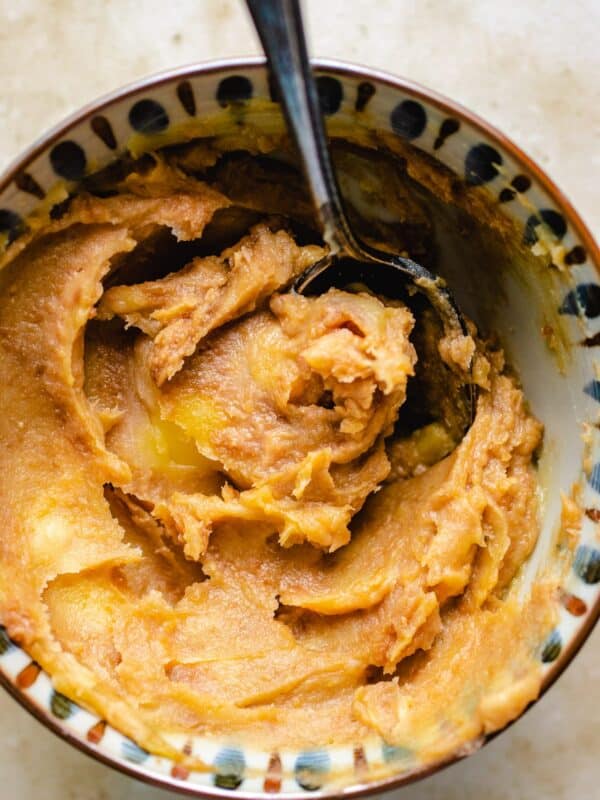
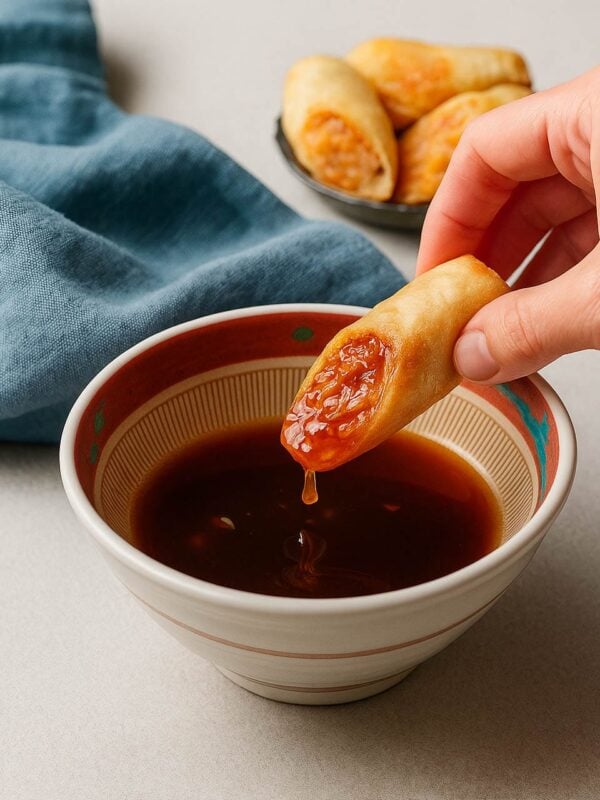
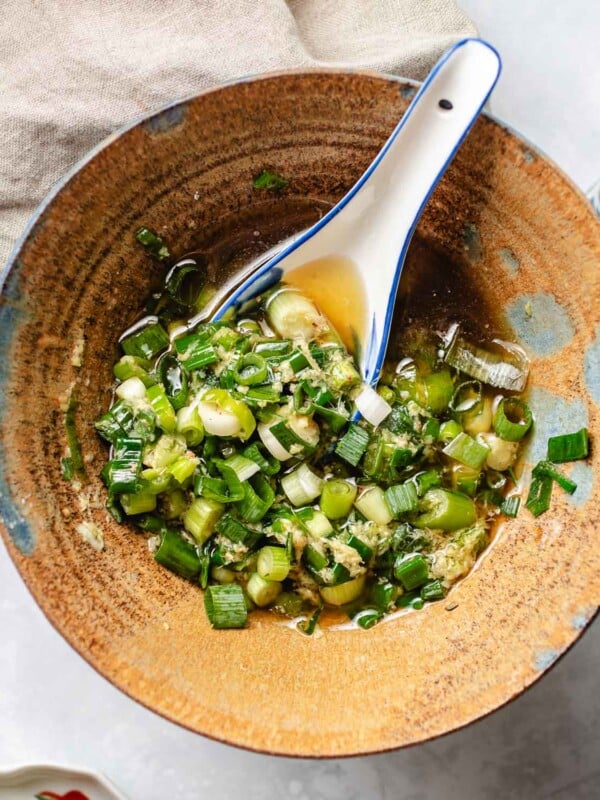
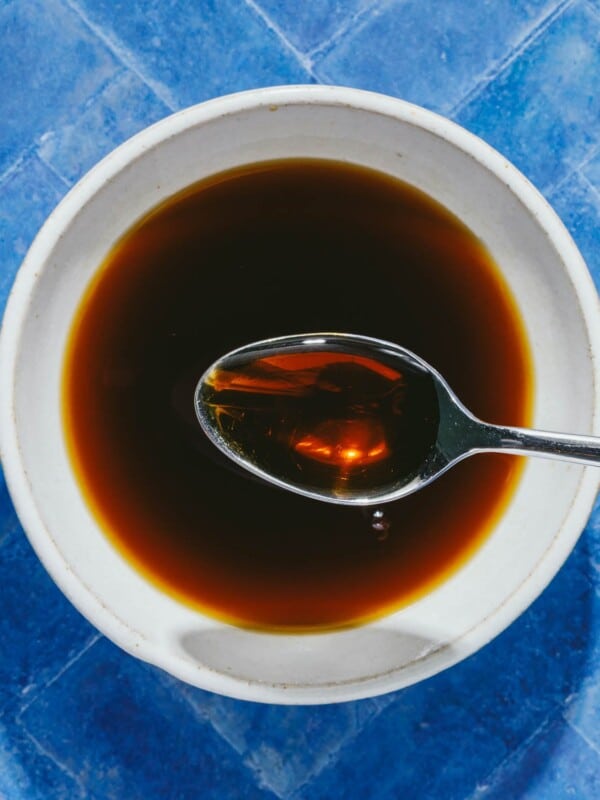
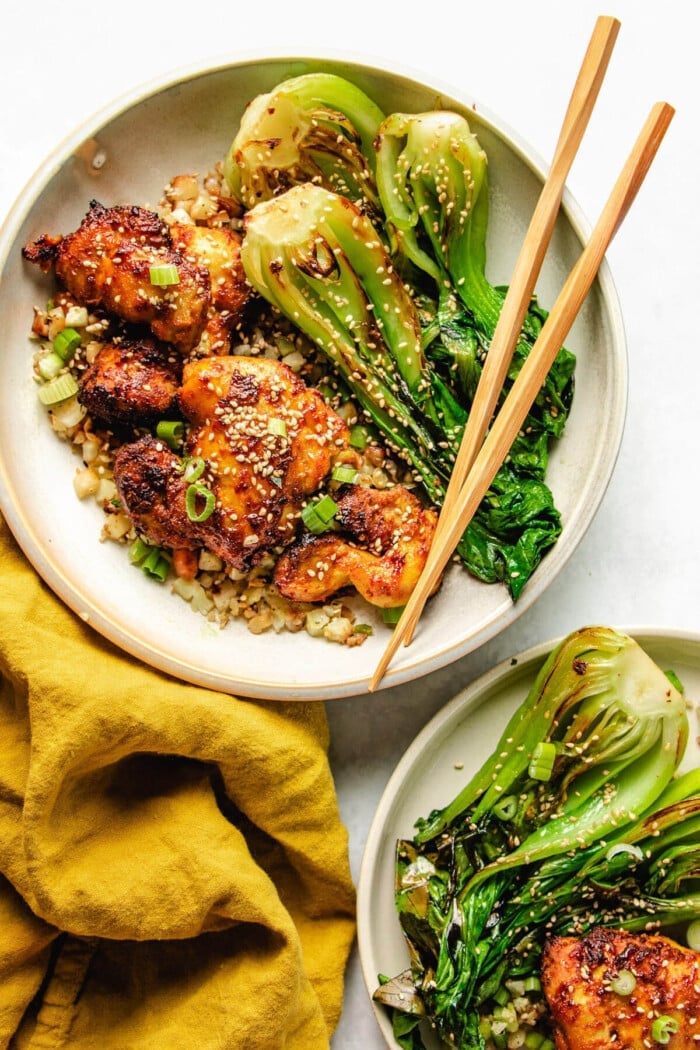








Tastes just like what I had growing up in Taiwan! The sauce flavor is complex yet made with simple ingredients. I love that the flavor is not just soy salty taste but a well-rounded one. Thank you for the recipe. Where I live is not easy to find store-bought bottle so this homemade version is perfect!
Thank you so much!